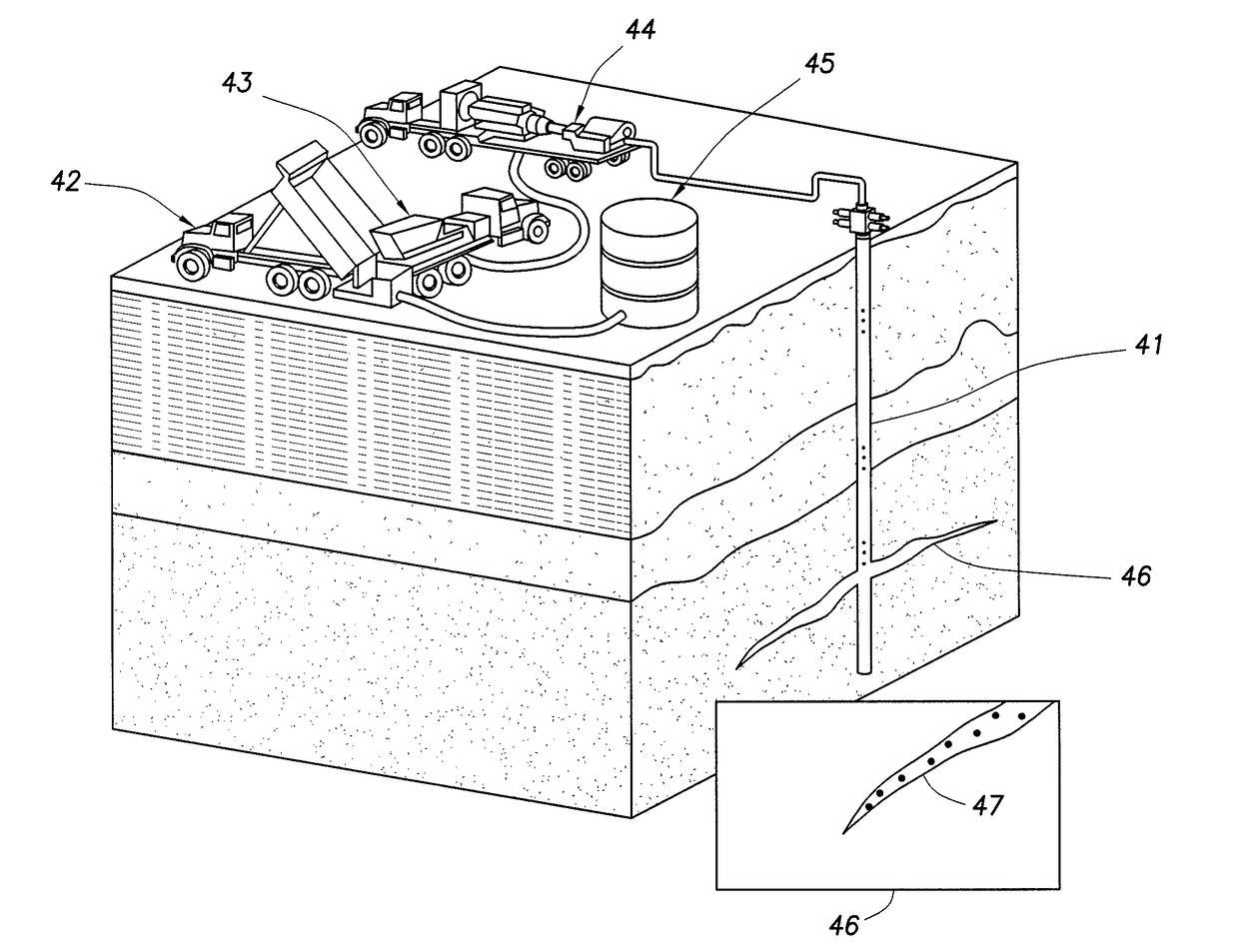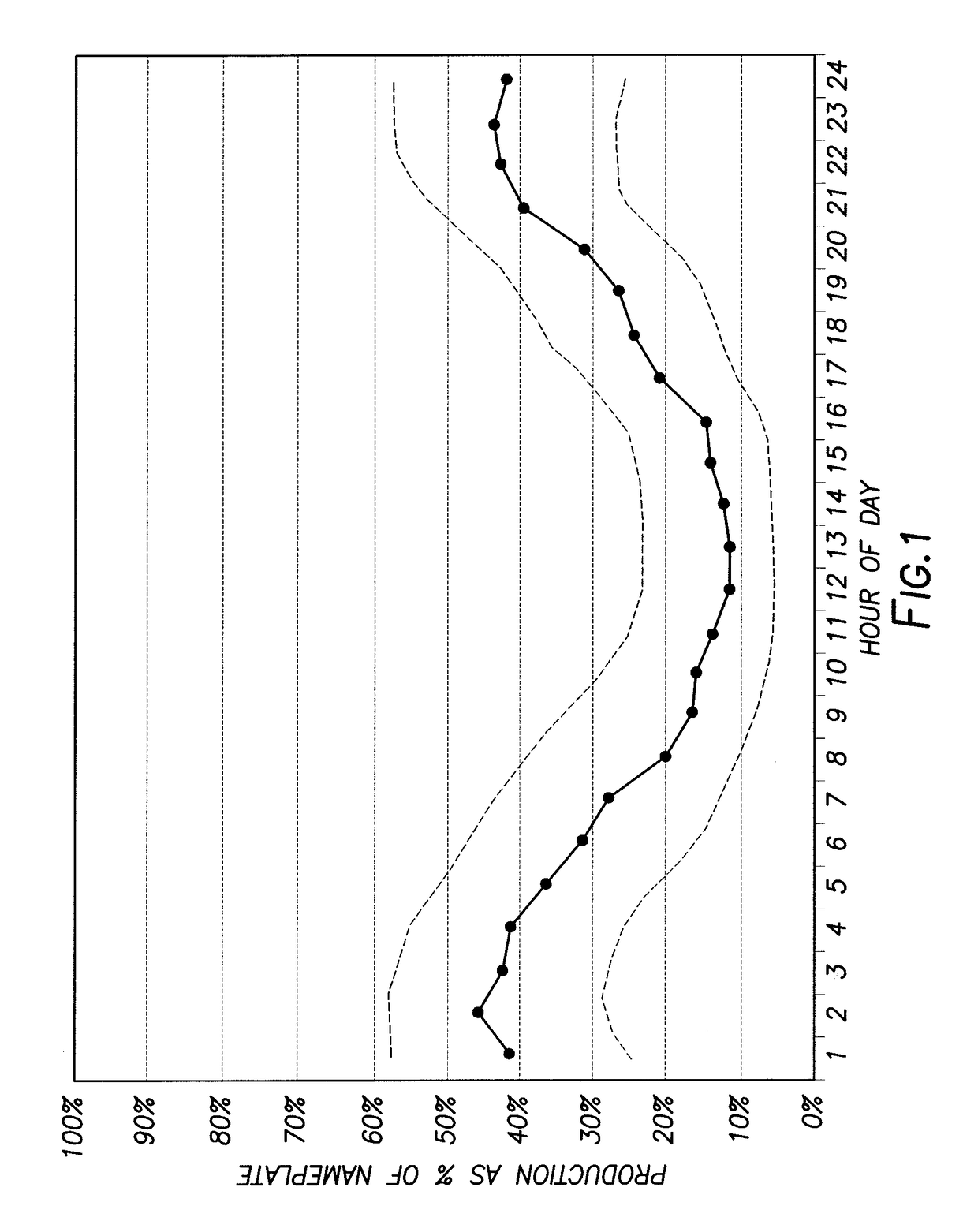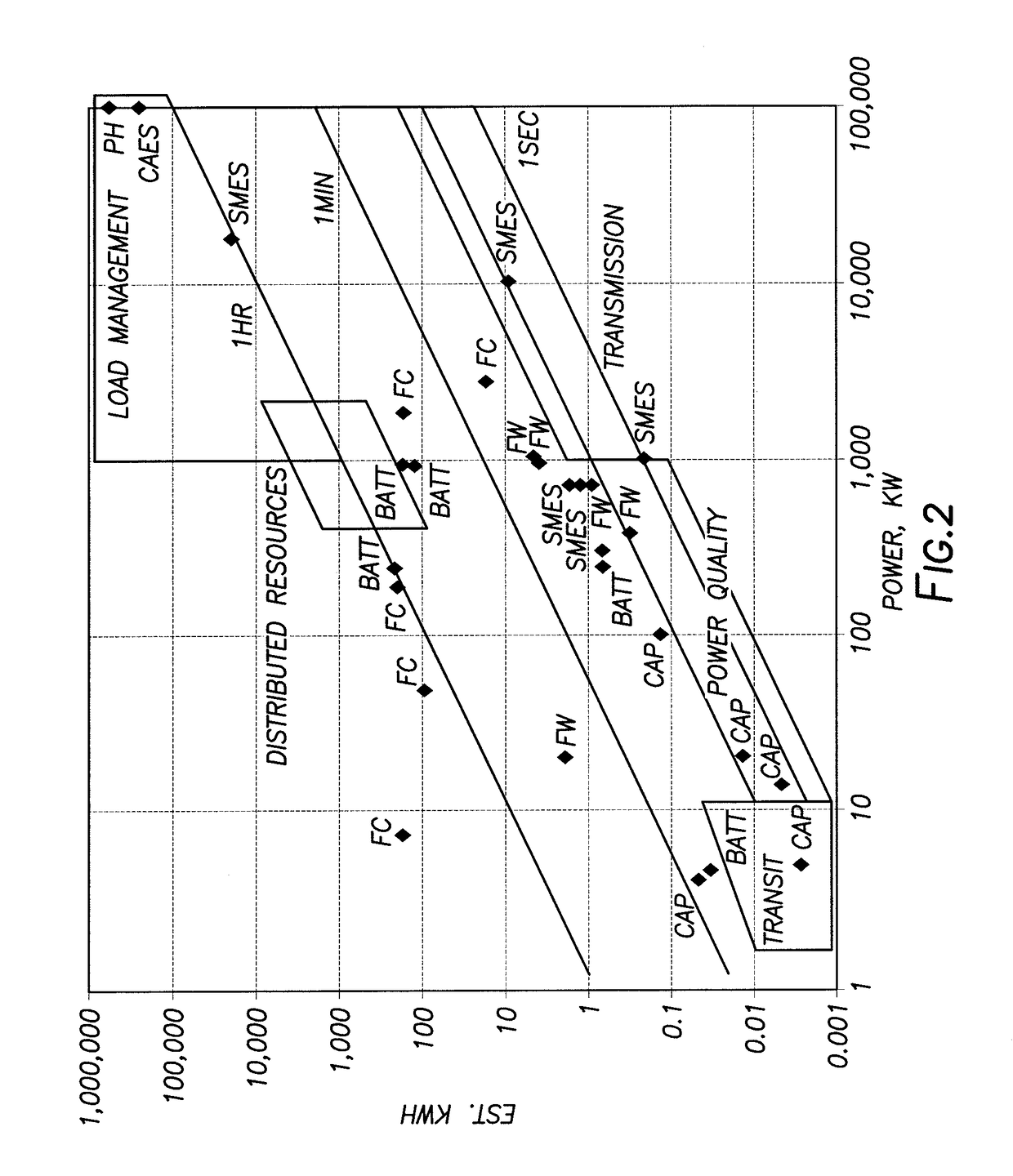Hydraulic Geofracture Energy Storage System with Desalination
a geofracture and energy storage technology, applied in the direction of quary waste water treatment, borehole/well accessories, treatment water, etc., can solve the problems of grid instability, low capital expenditure and operating costs, and limited renewable electric power at the grid level, not only by source economics, but also by grid stabilization technologies. , to achieve the effect of less permeability and increased propagation pressure of the fractur
- Summary
- Abstract
- Description
- Claims
- Application Information
AI Technical Summary
Benefits of technology
Problems solved by technology
Method used
Image
Examples
example 1
1 km Deep Well, with 1 cm Average Lift Over 100 Meter Radius (Typical Oilfield Frac)
[0031]Well depth: 1,000 m[0032]Fracture radius: 100 m[0033]Slug volume: 31,400,000 m3 [0034]Rock density: 2,800 kg / m3 [0035]Slug mass: 87,900,000,000 kg[0036]Slug weight: 862,000,000,000 Newtons[0037]Average lift: 1 cm[0038]Lift energy: 8,620,000,000 Joules 8.6 E 9 Joules[0039]Storage capacity: 2,395 kw-hr
example 2
1 km Deep Well, with 10 cm Average Lift Over 500 Meter Radius
[0040]Well depth: 1,000 m[0041]Fracture radius: 500 m[0042]Slug volume: 7.85 E 8 m3 [0043]Rock density: 2,800 kg / m3 [0044]Slug mass: 2.20 E 12 kg[0045]Slug weight: 2.16 E 13 Newtons[0046]Average lift: 10 cm[0047]Lift energy: 2.16 E 12 Joule[0048]Storage capacity: 5.99 E 5 kw-hr
[0049]Although explanations of hydraulic fracture properties are described, Applicant does not wish to be bound by a particular scientific theory concerning the properties of hydraulic fractures.
[0050]For comparison, a 3 MW wind turbine operating at typical 30% utilization factor generates 2.16E4 kw-hr per day. The unit described in example 2 can therefore store the entire nominal daily output of wind farm comprised of 167 turbines. If one purchased a battery based storage system for this amount of stored energy at current prices ($400 / kw-hr), a capital investment of roughly $239 Million would be required. We expect that the capital investment for en...
PUM
 Login to View More
Login to View More Abstract
Description
Claims
Application Information
 Login to View More
Login to View More - R&D
- Intellectual Property
- Life Sciences
- Materials
- Tech Scout
- Unparalleled Data Quality
- Higher Quality Content
- 60% Fewer Hallucinations
Browse by: Latest US Patents, China's latest patents, Technical Efficacy Thesaurus, Application Domain, Technology Topic, Popular Technical Reports.
© 2025 PatSnap. All rights reserved.Legal|Privacy policy|Modern Slavery Act Transparency Statement|Sitemap|About US| Contact US: help@patsnap.com



